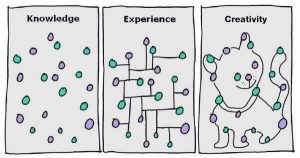Here is some of the information I recently shared in my September newsletter. Each newsletter has a specific focus. This month is focused on pedagogy, adult learning and teaching information. If you would be interested in receiving my newsletters, please head over to my contact page and sign up.
Tidbits, Updates and Resources
1.David Goobler, columnist at Chronicle Vitae, shares some reasons why rubrics are good and why they may not work. A good rubric:
Why they may not work:
Potential Solution:
2. An interesting proposal was written and published by Rick Rosen, titled Continuing Education in the Massage Therapy Field: Proposal for an alternative to state and national regulation in 2013, attempts to address the issue of the regulation of coining education in massage therapy and the challenge of inconsistencies and oversight.
3. Simon Oxenham posted a link to the video by Daniel Willingham “Believe it or not, ‘learning styles’ don’t exist” on Big Think.
4. Todd Whitaker published a list, “What Great Teachers Do differently: 14 Things That Matter Most” in Nov 2014. Below is the list:
5. On the blog, Inside Higher Ed, John Warner shared his response (The Most Important Work of Pedagogy I’ve Read in Ten Years) about a book for teachers, For White Folks Who Teach in the Hood…and the Rest of Y’all Too by Christopher Edin. While Warner is white, does not teach in the hood and actually teaches at the college level, he found wonderful insight into ways of making his classes more interactive and relevant. If you are looking for suggestions, this book can help.
6. A research article, Demystifying the rubric: a five-step pedagogy to improve student understanding and utilization of marking criteria, by Lorraine Jones and published in Higher Education Research & Development, “investigates an intervention designed to encourage effective utilization of rubrics.”
7. Free webinars on educational topics are offered quarterly through Sohnen-Moe Associates in conjunction with The Benjamin Institute. The November session, Research - Evidence- Informed Practice in the Classroom, with Merrilyn Cambron will be offered Nov 16th at 2 pm eastern. These webinars are 1.5 hours and include a question and answer period. If you are interested in participating, you can register now.
8. Teachthought published an explanation of Competency-based learning and included a helpful infographic from Rasmussen College.
9. In the research study, Teaching critical thinking, by N.G. Holmes, and published on Proceedings of the National Academy of Sciences of the United States of America, July2015, the goal stated is :”we demonstrate a structure for providing suitable practice that can be applied in any instructional setting that involves the acquisition of data and relating that data to scientific models.”
10. Roger Greenaway provides a monthly free newsletter with facilitation tips: Active Review Tips. “Re-charge your facilitation skills with practical tips and tools for active and effective debriefing” You can subscribe on his website.
11. A great free resource, The Science of Learning, can be downloaded at Deans for Impact website. It is a good resource for new teachers as well as established teachers looking to be more effective.
12. Paul Bruno summarizes learning basics in his article How People Learn: An Evidence-Based Approach. This includes 6 scientific principles he feels it is important for every teacher to know. The principles are summarized below. For more explanation, you can read the full article at Edutopia.
For your visual enjoyment:

You must be logged in to post a comment.
Thank you for sharing this helpful and relevant information, Michelle. Your many contributions to the massage profession are greatly appreciated.